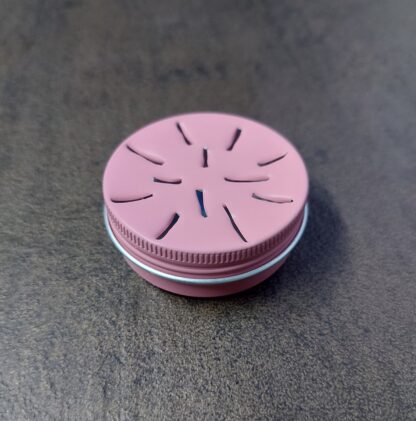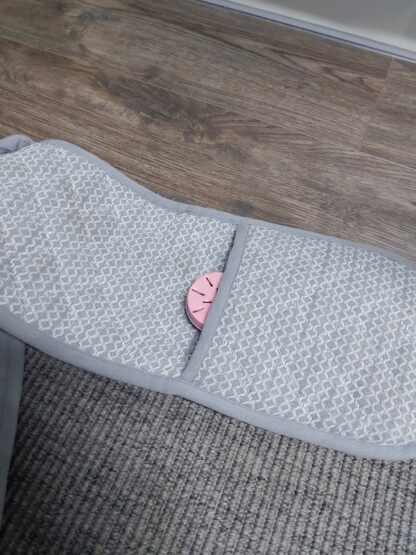
Step 1
It is widely known that dogs are really good at sniffing. There are dogs who sniff out drugs, dogs who point out bombs, dogs who can smell impending medical crises, and of course, hunting dogs who can sniff out game. Not only does sniffing help us humans in various ways, but it also helps the dogs themselves! Their sense of smell is how dogs “see” the World. Their sense of smell is arguably more important to them than their eyesight. This means that to feel truly fulfilled, to feel truly “dog”, our dogs need to sniff! It exercises their mind and their body; it makes them feel good, it calms them down and can help promote good behaviour.
Most of our dogs will find that stray bit of cheese you dropped on the floor, or the piece of kibble that rolled under the fridge. But how do we teach them to find something that isn’t immediately edible?
It’s very simple, really – dogs will sniff out inedible items for us because they have learnt that the item makes good things happen! Typically, this is food, but for some it might be their favourite toy. Every time they find the item, they get rewarded handsomely.
And this is our first training step!
You will need:
|

Once or twice a day, for a few minutes, have your treats ready and present your dog with the scent item. As soon as they show any interest, mark, or click, and feed them a couple of treats right above the scent item. Feeding them right above the scent items will encourage your dog to gravitate towards the item. Then, toss a treat to reset your dog, and present the item in a slightly different location. Again, as soon as your dog shows any interest, mark and reward on the item. For the first couple of sessions, hold the item in your hand before you progress to placing the item on the floor in close proximity to where your hand would be in the next sessions.

Note: In between training sessions, keep your scent item in an airtight container, ideally in the freezer! This is to keep the odour distinct and prevent your dog from learning that the odour doesn’t matter.
Step 2
If your dog immediately moves their nose to the scent item in anticipation of the reward every time you present the item on the floor, you are ready for step 2.
|
You will need:
|
Begin your training session with a couple of repetitions of step 1: holding your scent item in your hand and marking and rewarding your dog for moving their nose to it. Then, progress to placing your scent item on the floor and mark and reward your dog for seeking it out with their nose.
If this goes well, you can now progress to adding a little bit of distance between your dog and the scent item by placing it a little bit further away from yourself. You can do this while tossing a treat to reset your dog.

Initially, your dog may look a little perplexed when they discover that the scent item isn’t where it had previously been located. If this happens, simply freeze your body for a few moments and let your dog figure it out by themselves. Their sense of smell should kick in and they should follow their nose to the scent item.
As soon as their nose reaches the item, mark and generously reward your dog above you’re the scent item. Then, toss a treat to reset them and move the tin to a different location.
Over the course of perhaps two or three short sessions, you can move the scent item up to two or three metres away from where you are standing.
When your dog is confidently seeking out the scent item after each reset, you can now introduce a verbal cue like “Find it!” or similar.
As soon as you observe your dog striding towards the scent item, say your cue and wait for your dog to locate the item before marking and rewarding as usual. The first few times you use your verbal cue, your dog might interrupt their search and look at you, wondering why you’ve suddenly spoken to them. As before, simply freeze your body for a moment and allow them to figure it out by themselves.
In preparation for Step 3, your dog should practise confidently locating a visible scent item or tin within a 2 or 3 metre radius of your original location (on verbal cue, if you’ve introduced one).
Step 3
|
You will need:
|
Step 3 will look and feel a lot more like “proper” scent training. This is because we are now fading out the visual cues for your dogs.
As always, start your session with a few repetitions of the previous learning step. If your dog succeeds easily, you can progress to today’s lesson.
Scatter your rug, towels, boxes, and other items around your training area. You will be using them to gradually hide your scent tin or item for your dog to find!
Initially, only hide your scent item partially. Tucking it under the edge of a rug, for example, is a great way to start.
When you first moved your scent item in Step 2, your dog might have been a little bit confused. You might find that they pause for a moment here, too. Freeze your body and let your dog work out where the item is. As soon as their nose reaches your scent item, mark the behaviour, and generously reward your dog on the scent item.

Toss a treat or two to reset your dog and hide the item in a different fairly easily accessible location, then let your dog find the item.
During this training phase it is really beneficial to vary your hides as much as you can. This teaches your dog that the environmental context doesn’t matter – only the odour matters! Use buckets, chairs, boxes, fabrics, flowerpots…. Just make sure that the scent item is still easily accessible to your dog and that they are able to succeed each time.
Step 4
In Step 4, we are progressing your dog’s ability to locate the target scent item in different hiding places, and we will teach your dog to immediately begin searching an area, even when you’ve left them in a different room while you hide your scent item.
|
You will need:
|
Start your training session with a few repetitions of fairly easy partially hidden scent items, and then a fully hidden scent item (inside an empty box or behind a chair leg, for example). If your dog succeeds, let them wait behind a closed door while you place your next hide.
Ensure that this time, the hiding place is very quickly and easy to locate. Your dog should ideally almost immediately smell and find the target item once you let them into the room.
Repeat this step a couple of times to clearly communicate that being left outside of the search area is now part of the game.
You can now become more creative with your hiding places – vary the height of the placement, vary the objects in/under/among which you hide your target scent item, and begin to challenge your dog!
If your dog struggles, reduce the level of difficulty and allow them to succeed again to keep them enthusiastic.
Odour fills the air of a room pretty quickly, so after the initial couple of searches, your dog will find it harder to locate the strongest concentration of the target odour (your scent item) among all of the residual odour in the room.
You may notice your dog searching where you’ve previously hidden the item. To make it easier for your dog, you can either open windows and doors for a few minutes to clear the air before you let your dog search again or move to a different room and hide your scent item there.
Author: Christina Wells
